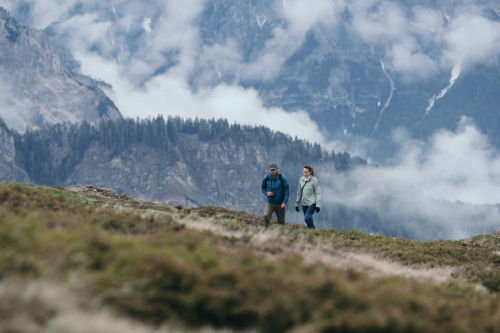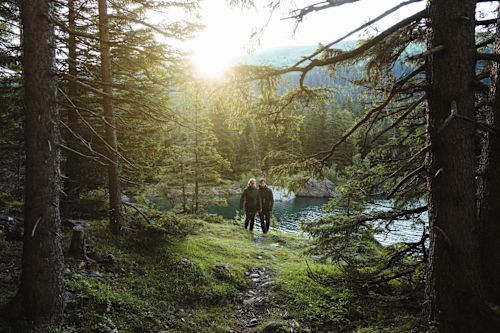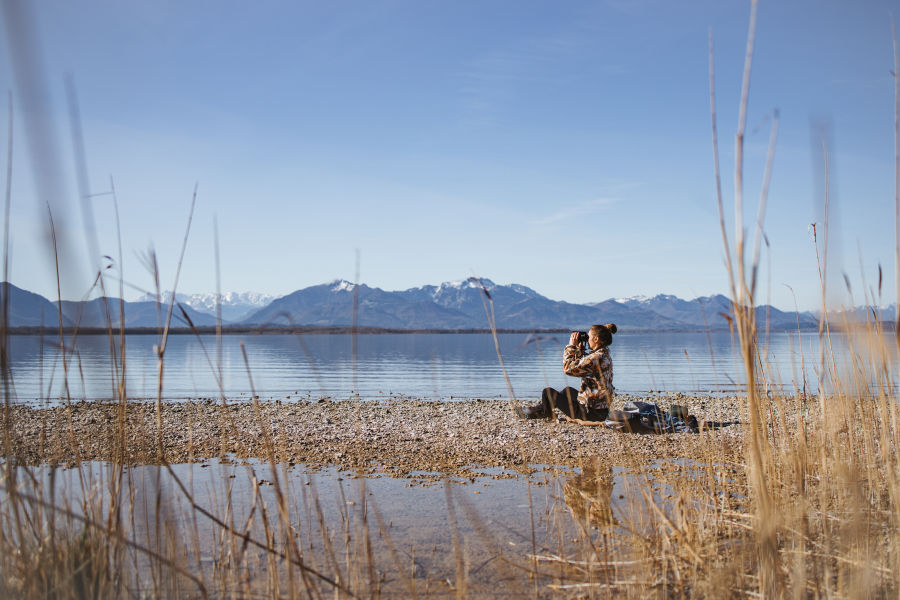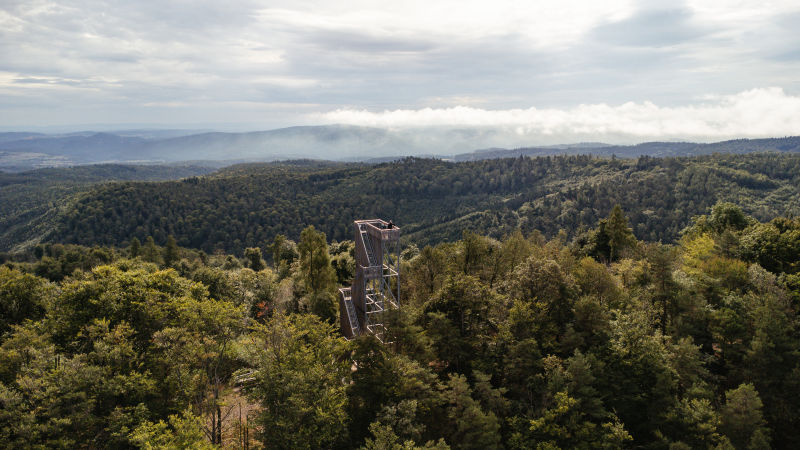The sunrise this morning is hidden in the mist. It takes hours before the clouds no longer cover the Achendelta, but instead reveal the view of the scenic meadows and the shores of Lake Chiemsee. And with it, the birdlife that calls the area home. While whooper swans and coots glide through the water, I lean against the wooden railing of the observation tower, my binoculars in hand. I'm waiting for someone very special: the kingfisher.
The Kingfisher and its Fascination
I have been fascinated by kingfishers ever since I first looked for them in South Africa and deliberately observed them. One might say that the kingfisher was my gateway into the world of birds. Since this very first encounter, I often take the time to go out and spot not only this bird, but also other species.
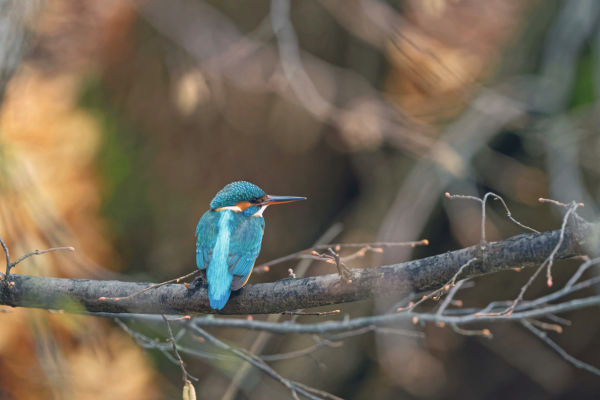
The kingfisher
#mywildlife
The kingfisher makes this particularly easy: his turquoise back and reddish-brown belly shimmer in either a turquoise or reddish-brown hue depending on the continent. This coloring will always be one thing: unmistakable.
The kingfisher also has a beak that is about as long as its head. Whenever such a bird sits in front of me, it reminds me of South Africa, it reminds me of travelling, and of days where I have nothing more and nothing less to do than to sit still and let the landscape reveal its wonders.
The Bavarian Sea
The landscape that lies before me today is the Bavarian Sea. At 8,000 hectares, Lake Chiemsee is the largest lake in Bavaria and, like most of the other Alpine lakes, was formed around 10,000 years ago during the last ice age. The delta of the Tiroler Achen is the only naturally developing inland delta in Central Europe. The observation tower where I have made myself comfortable for the morning – in the hope of spotting a kingfisher – is located right in the middle of this unique landscape.



Biodiversity at Lake Chiemsee
I wait, in vain, as it turns out later. Although I have often been able to observe the kingfisher here on Lake Chiemsee, it will not show itself to me today. However, the kingfisher is not the only species that has made Lake Chiemsee and the Achendelta its home. The lake and unspoilt shore areas are particularly important for waterfowl and wading birds. Biologists and ornithologists have recorded over 300 different bird species over the past decades. Around half of these are native birds that breed in the untouched and protected areas around Lake Chiemsee. These include cormorants, falcons besides the aforementioned kingfishers. The other half of the bird species sighted are guests that stop off at Lake Chiemsee and the neighbouring moorland as they pass through. The white-spotted sandpiper for example, which breeds mainly in the tundra of Scandinavia and Russia, spends the summer at Lake Chiemsee before travelling to its wintering grounds south of the Sahara.
In winter and during migration periods, up to 30,000 birds sometimes flock to Lake Chiemsee.
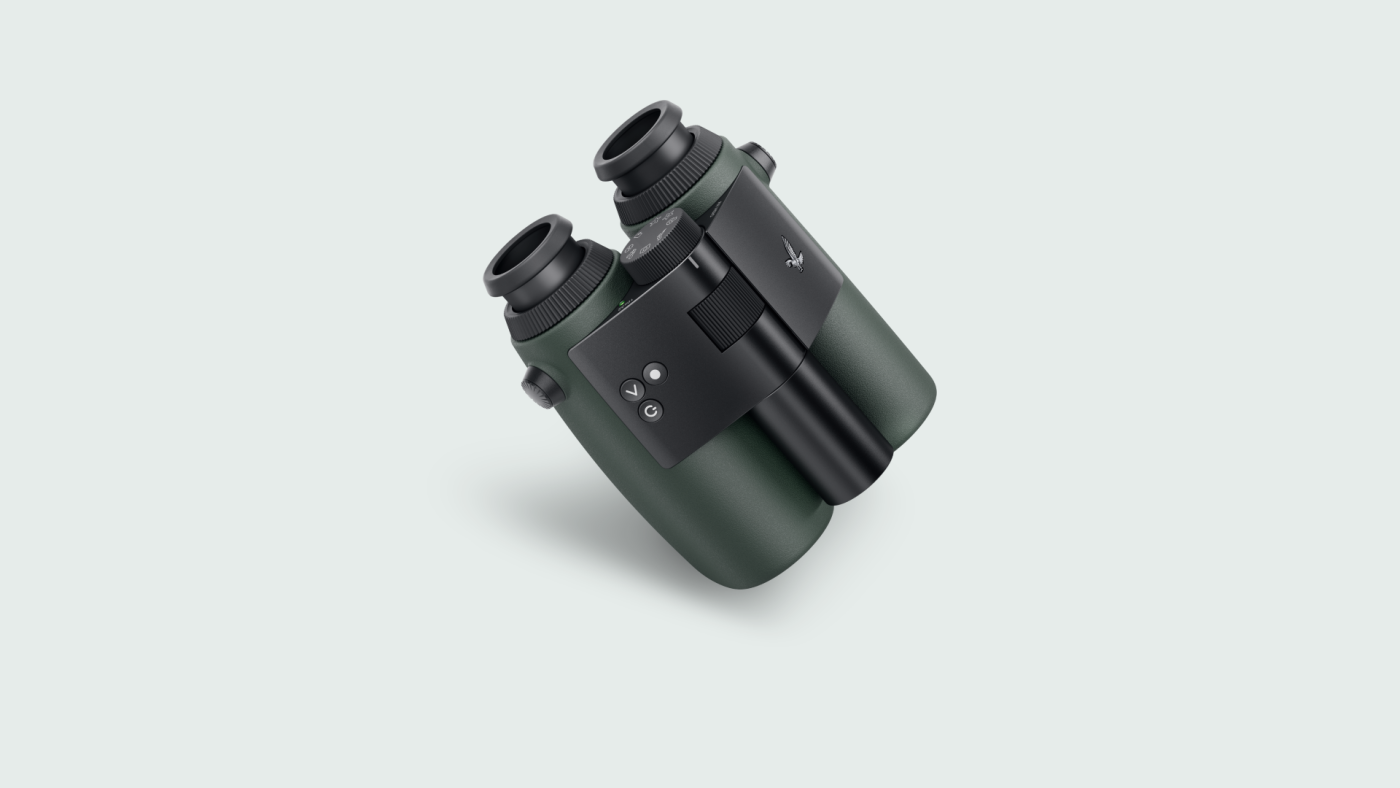
As the sun rises higher and higher in the sky in front of me the Alpine peaks, some of which are still covered in snow, become increasingly blurred with the glistening blue of the sky. I ask myself why I have set my sights on the kingfisher of all things. I wonder why I don’t listen to the chaffinch singing with the same enthusiasm or watch the great tits jumping up and down excitedly in the tree next to me?
While this thought is still forming, my eyes fall on the binoculars lying in my lap. And I realize that this thought is no longer true. These binoculars know them all: not only the 300 different bird species that I could potentially observe here on Lake Chiemsee but a total of around 5,000 birds worldwide. The AX Visio are the first smart binoculars. My window to the world of birds. The only pair of binoculars that tell me exactly what I see. At the touch of a button, it identifies birds and mammals. Even offline. We don't have to be connected to the rest of the world. We can enjoy nature all to ourselves while being connected to smart technology and seeing more than ever before.
A new Perspective
Still, I won't spot the kingfisher that day. Not even after I moved from the observation tower, which is hidden in the reeds on the southern shore of Lake Chiemsee, to a stone beach on its eastern shore. But here I no longer wait for the kingfisher. Instead, I point the AX Visio towards all the other birds that are willing to be observed and even photographed using the binocular’s camera. Whooper swans, coots, great tits, and mallards. And for the first time, I realized that it may have never been the Kingfisher itself, that I was particularly interested in. It was about knowing what I was seeing.
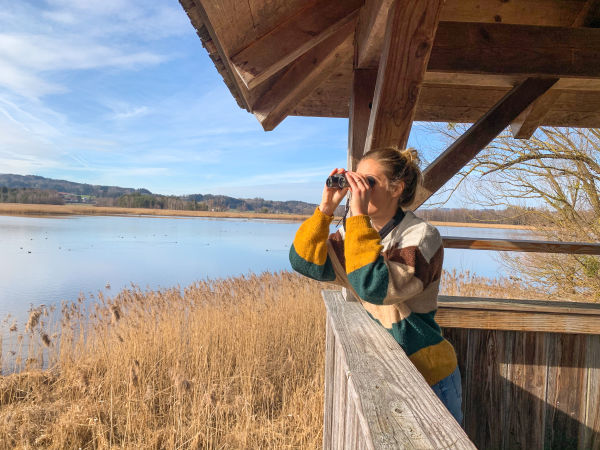
Acerca de
Franziska Consolati
Franziska Consolati (de soltera Bär) es autora y aventurera. Apenas había alcanzado la edad adulta cuando se embarcó en uno de sus primeros viajes por el Sáhara con los beduinos. En algún punto entre las dunas del desierto, se enamoró locamente de nuestro planeta. Desde entonces, ha viajado por medio mundo, se ha sumergido en distintas culturas y ha explorado la naturaleza salvaje más allá de los caminos trillados. Cada paso le ha hecho reafirmarse en la urgente necesidad de actuar para proteger nuestra Tierra. Franziska trabajó para una organización medioambiental durante cuatro años antes de convertirse en autora independiente, centrándose tanto en los viajes como en la protección del medio ambiente.
